- 全部删除
 您的购物车当前为空
您的购物车当前为空
PARP1 Protein, Human, Recombinant (His)
产品编号 TMPY-01188
PARP Protein, Human, Recombinant (His) is expressed in Baculovirus insect cells with His tag. The predicted molecular weight is 114.5 kDa and the accession number is A0A024R3T8.
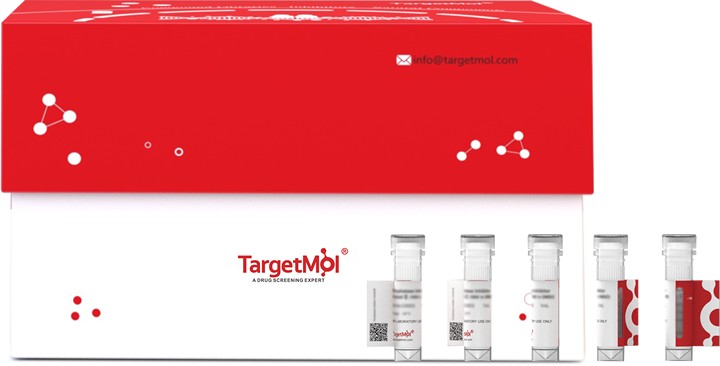
PARP1 Protein, Human, Recombinant (His)
产品编号 TMPY-01188
PARP Protein, Human, Recombinant (His) is expressed in Baculovirus insect cells with His tag. The predicted molecular weight is 114.5 kDa and the accession number is A0A024R3T8.
| 规格 | 价格 | 库存 | 数量 |
|---|---|---|---|
| 5 μg | ¥ 585 | 6-8日内发货 | |
| 10 μg | ¥ 958 | 6-8日内发货 | |
| 20 μg | ¥ 1,590 | 5日内发货 | |
| 50 μg | ¥ 3,170 | In stock | |
| 100 μg | ¥ 5,420 | 5日内发货 | |
| 200 μg | ¥ 9,260 | 5日内发货 | |
| 500 μg | ¥ 18,700 | 5日内发货 |
大包装 & 定制
加入购物车
TargetMol 的所有产品仅用作科学研究或药证申报,不能被用于人体,我们不向个人提供产品和服务。请您遵守承诺用途,不得违反法律法规规定用于任何其他用途。
产品信息
| 生物活性 | Activity testing is in progress. It is theoretically active, but we cannot guarantee it. If you require protein activity, we recommend choosing the eukaryotic expression version first. |
| 产品描述 | PARP Protein, Human, Recombinant (His) is expressed in Baculovirus insect cells with His tag. The predicted molecular weight is 114.5 kDa and the accession number is A0A024R3T8. |
| 种属 | Human |
| 表达系统 | Baculovirus Insect Cells |
| 标签 | C-His |
| 蛋白编号 | P09874 |
| 别名 | PPOL,poly (ADP-ribose) polymerase 1,PARP-1,PARP,pADPRT-1,ARTD1,ADPRT1,ADPRT |
| 蛋白构建 | The amino acids corresponding to the full length of human PARP1 (NP_001609.2) (Met 1-Trp 1014) was fused with a polyhistidine tag at the C-terminus. Predicted N terminal: Met |
| 蛋白纯度 | ≥ 90 % as determined by SDS-PAGE. ≥ 90 % as determined by SEC-HPLC. 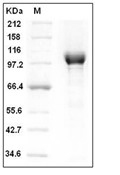 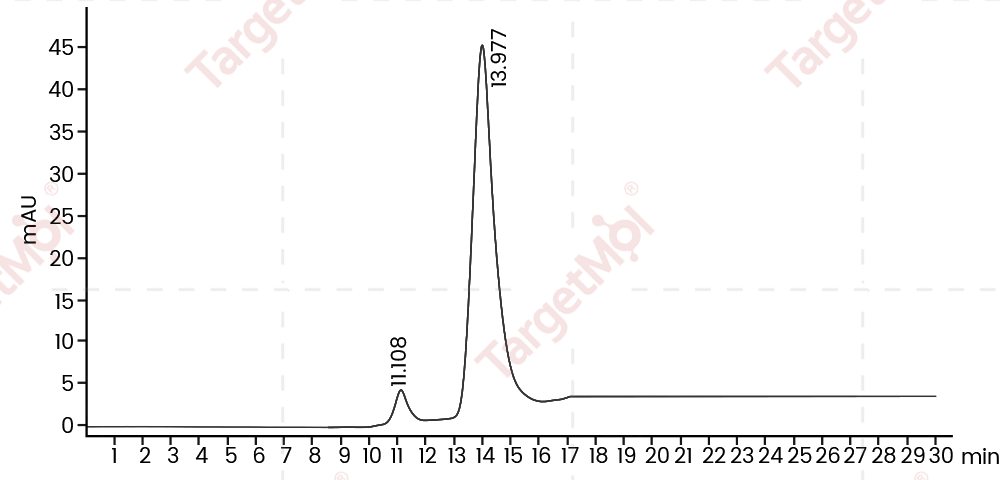 |
| 分子量 | 114.5 kDa (predicted); 100-110 kDa (reducing conditions) |
| 内毒素 | < 1.0 EU/μg of the protein as determined by the LAL method. |
| 缓冲液 | Supplied as sterile 20 mM Tris, 300 mM NaCl, 10% glycerol, 0.5 mM TCEP, 2 mM EDTA, pH 7.5. |
| 复溶方法 | A Certificate of Analysis (CoA) containing reconstitution instructions is included with the products. Please refer to the CoA for detailed information. |
| 存储 | It is recommended to store the product under sterile conditions at -20°C to -80°C. Samples are stable for up to 12 months. Please avoid multiple freeze-thaw cycles and store products in aliquots. |
| 运输方式 | In general, Lyophilized powders are shipping with blue ice. Solutions are shipping with dry ice. |
| 研究背景 | Poly (ADP-ribose) polymerase 1(PRAP1), also known as NAD(+) ADP-ribosyltransferase 1(ADPRT), is a chromatin-associated enzyme that modifies various nuclear proteins by poly(ADP-ribosyl)ation. The ADP-D-ribosyl group of NAD+ is transferred to an acceptor carboxyl group on a histone or the enzyme itself, and further ADP-ribosyl groups are transferred to the 2'-position of the terminal adenosine moiety, building up a polymer with an average chain length of 2-3 units. The poly(ADP-ribosyl)ation modification is critical for a wide range of processes, including DNA repair, regulation of chromosome structure, transcriptional regulation, mitosis and apoptosis. PARP1 is demonstrated to mediate the poly(ADP-ribose) ation of APLF (aprataxin PNK-like factor) and CHFR (checkpoint protein with FHA and RING domains), two representative proteins involved in the DNA damage response and checkpoint regulation. Further, It has been suggested that DNA-dependent protein kinase (DNA-PK), another component of DNA repair, suppresses PARP activity, probably through direct binding and/or sequestration of DNA-ends which serve as an important stimulator for both enzymes. PARP1 inhibitors are thus proposed as a targeted cancer therapy for recombination deficient cancers, such as BRCA2 tumors.Cancer ImmunotherapyImmune CheckpointImmunotherapyTargeted Therapy |
计算器
SCI 文献
技术支持
请阅读 重组蛋白用户指南 了解更多具体信息.










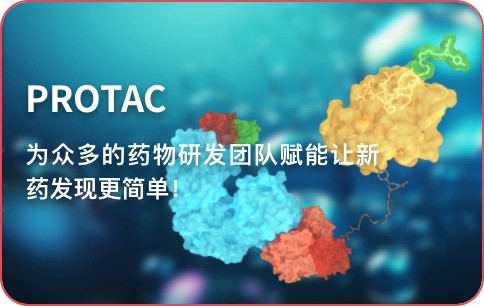






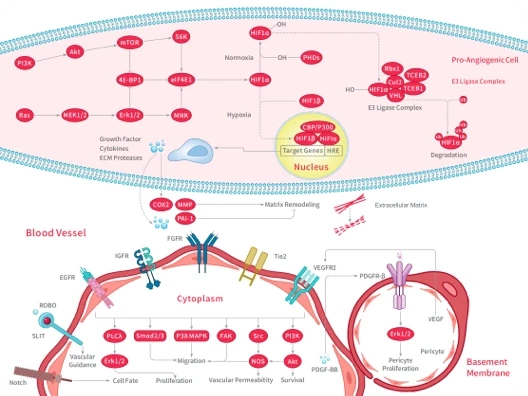
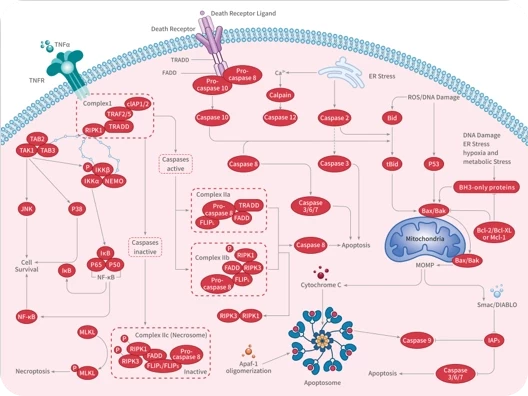
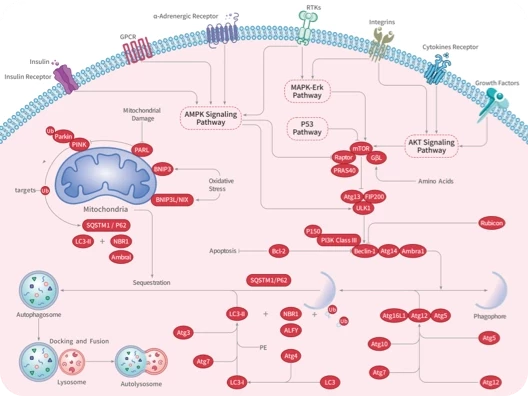


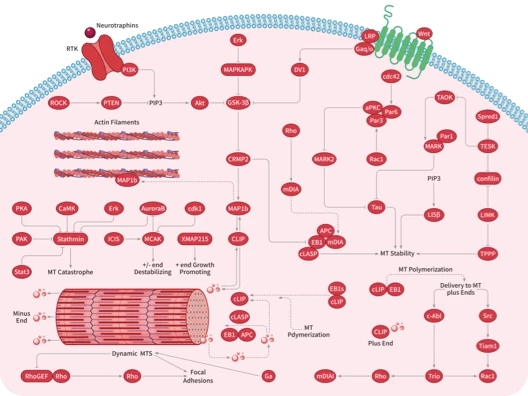
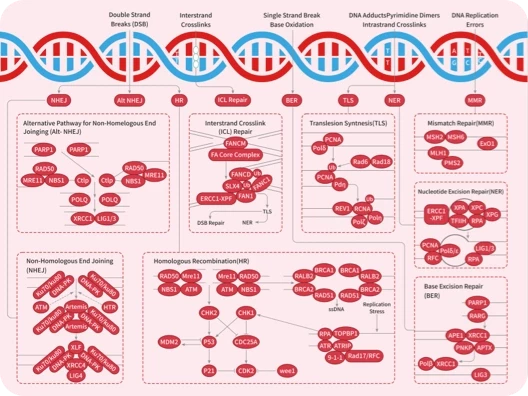

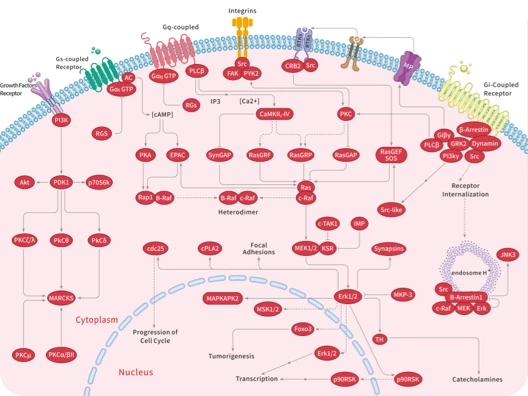
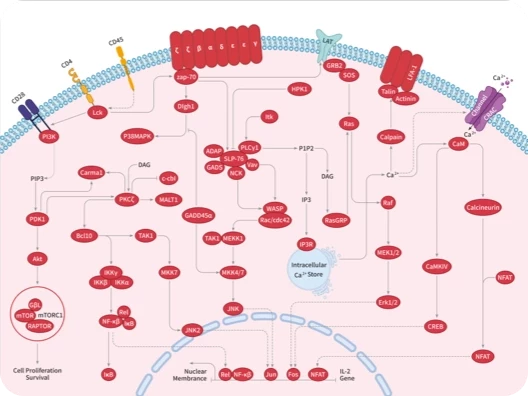
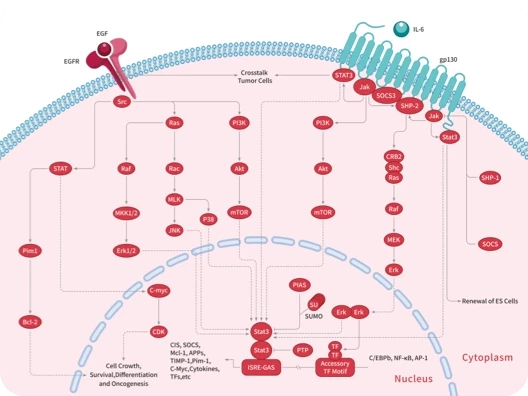
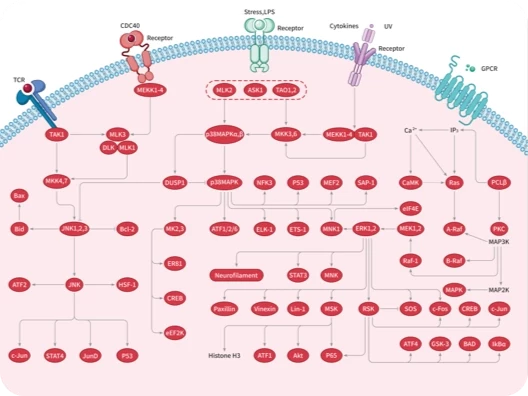


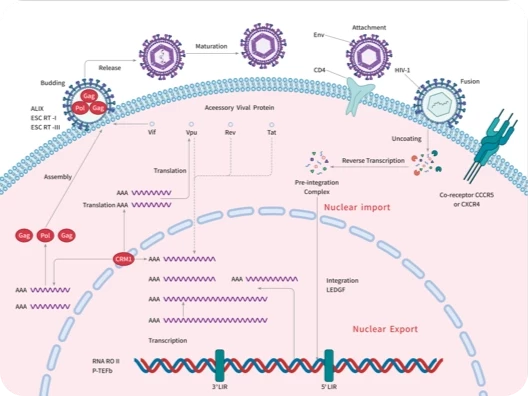

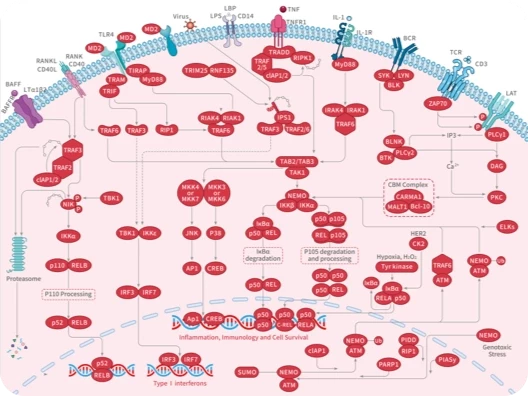
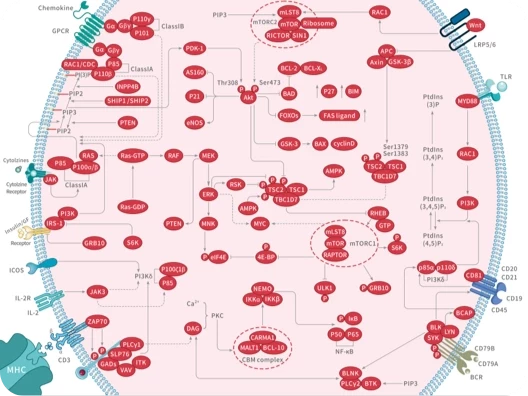
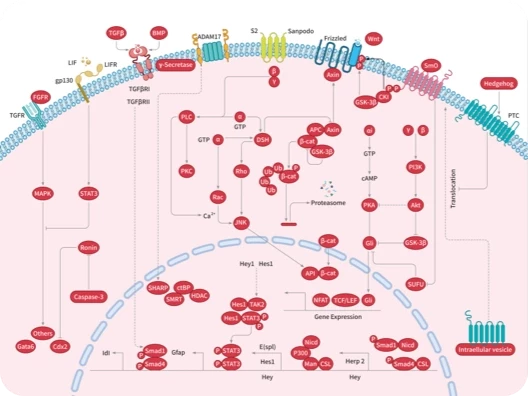

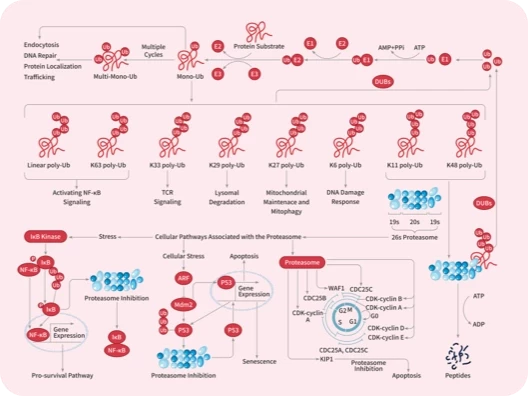


 |
|